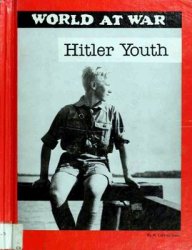The unifying forces operative at the end of the period of conversion and crystallization persisted during the period of fragmentation and florescence, but the caliphal lands in Iraq became less central. Even though Baghdad remained preeminent in cultural prestige, important initiatives were being taken from surrounding “regions”: Andalusia; the Maghrib and sub-Saharan Africa; Egypt, Syria, and the holy cities (Mecca and Medina); Iraq; and Iran, Afghanistan, Transoxania, and, toward the end of the period, northern India.
The rtse of competitive regions
The rise of competitive regions signified a number of important realities. Increasingly, regional courts could compete with the ‘Abbasids and with each other as patrons of culture. Interregional and intraregional conflicts were often couched in terms of loyalties formed in the period of conversion and crystallization, but local history provided supplemental identities. Although the ‘Abbasid caliphate was still a focus of concern and debate, other forms of leadership became important. Just as being Muslim no longer meant being Arab, being cultured no longer meant speaking and writing exclusively in Arabic. Certain Muslims began to cultivate a second language of high culture, New Persian. As in pre-Islamic times, written as well as spoken bilingualism became important. Ethnic differences were blurred by the effects of peripatetic education and shared languages. Physical mobility was so common that many individuals lived and died far from their places of birth. Cultural creativity was so noticeable that this period is often called the Renaissance of Islam.
Economic changes also promoted regional strengths. Although Baghdad continued to profit from its central location, caliphal neglect of Iraq’s irrigation system and southerly shifts in the trans-Asian trade promoted the fortunes of Egypt. The opening of the Sahara to Maghribi Muslims provided a new source of slaves, salt, and minerals; and Egyptian expansion into the Mediterranean opened a major channel for Islamicate influence on medieval Europe. Islamdom continued to expand, sometimes as the result of aggression on the part of frontier warriors (ghazis) but more often as the result of trade. The best symbol of this expansiveness is Ibn Fadlan, who left a provocative account of his mission in 921, on behalf of the Baghdad caliph, to the Volga Bulgars, among whom he met Swedes coming down the river to trade.
By the beginning of the period of fragmentation and florescence, the subject populations of most Muslim rulers were predominantly Muslim, and nonsedentary peoples had ceased to play a major role. The period gave way to a much longer period (dated 1041-1405) in which migratory tribal peoples were once again critically important. In 1041 the reign of the Ghaznavid sultan Mas‘ud I ended. By then the Ghaznavid state had lost control over the Seljuq Turks in their eastern Iranian domains and thus inaugurated Islamdom’s second era of tribal expansion. Because localism and cosmopolitanism coexisted in the period of fragmentation and florescence, the period is best approached through a region-by-region survey that underscores phenomena of interregional significance.
Andalusia, the maghrib, and sub-saharan Africa_
Andalusia, far from the centre of Islamdom, illustrated the extent of Abbasid prestige and the assertion of local creativity. In the beginning of the period, Islamicate rule was represented by the Umayyads at Cordoba. Established in 756 by Abd al-Rahman I (known as al-Dakhil, “the Immigrant”), a refugee from the Abbasid victory over the Syrian Umayyads, the Umayyad dynasty in Cordoba replaced a string of virtually independent deputies of the Umayyad governors in the Maghrib. At first the Cordoban Umayyads had styled themselves emirs, the title also used by caliphal governors and other local rulers. Though refugees from ‘Abbasid hostility, they continued to mention the Abbasids in the salat al-jum‘ah (Friday prayer) until 773. Their independence was not made official, however, until their best-known member, Abd al-Rahman III (ruled 912-961), adopted the title of caliph in 929 and began having the Friday prayer recited in the name of his own house.




 World History
World History









